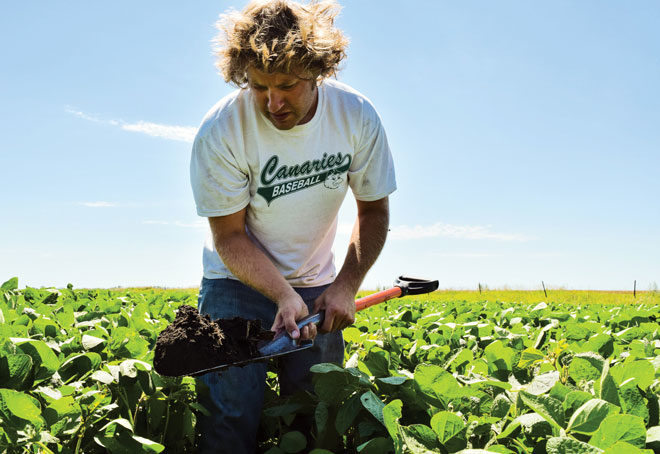No-Till Farmer
Get full access NOW to the most comprehensive, powerful and easy-to-use online resource for no-tillage practices. Just one good idea will pay for your subscription hundreds of times over.

A kaleidoscope of soils blankets the several thousand acres Tony Wagner and his father, Mark, are no-tilling just north of Jamestown, N.D.
Even within the same field Wagner can transition from a heavy, highly alkali gumbo to soils the consistency of beach sand. It seems logical, then, that the crops they grow would be just as diverse. But it took some time to come to this realization.
Currently, Mark and Tony raise corn, soybeans, spring wheat, barley, oats, and green field peas in an area where most producers stick firmly to just corn and soybeans. They also make use of cover crops, bumping the diversity of plants their fields see even higher.
Soils had long been a limiting factor for the Wagners. There were acres they couldn’t plant to corn because the sandy soils wouldn’t hold enough moisture throughout the growing season.
“They were the first soils you could plant into in spring and the first to dry out in summer,” he said. On these limiting soils, they chose to seed crops like winter wheat and yellow field peas, which they could harvest early while soil moisture was still in good shape. But an early harvest left bare soils vulnerable to wind erosion, which Tony didn’t like. One year, he decided to attempt double cropping peas…